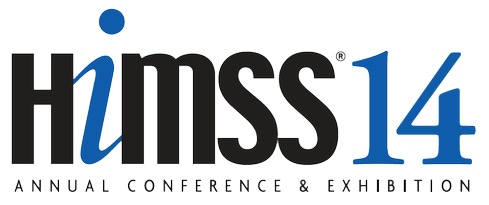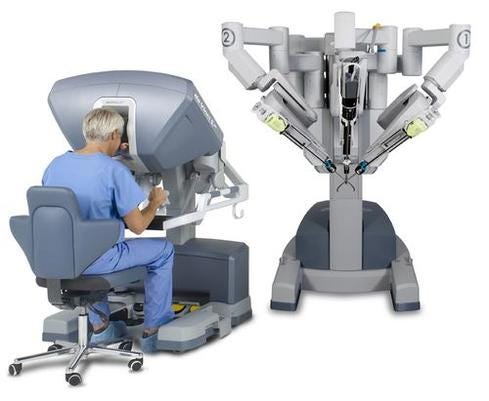A McKinsey consultant tells CHIME CIOs they will have to innovate their ways out of an economic squeeze. Regulators hint at some flexibility.


Surgical Robots: Look Who's Coming To The OR
Surgical Robots: Look Who's Coming To The OR (Click image for larger view.)
In a Sunday conclave leading up to the opening of HIMSS14, the immense healthcare IT tradeshow being held in Orlando this week, healthcare CIOs heard that the pressures their businesses are under are only going to get worse. Regulators will only hint tentatively at their willingness to be more flexible.
At a CIO Forum event organized by CHIME, the College of Healthcare Information Management Executives affiliated with the broader HIMSS trade organization, McKinsey Director for Healthcare Systems and Services Saum Sutaria, MD, presented a detailed economic analysis that essentially showed the economic squeeze on hospitals and health systems is only going to get more severe. Nor is there an easy way out through consolidation, he said. "The drumbeat today is merge, merge, merge," he said, but he predicted "half or more of these mergers are going to destroy value" because healthcare runs on "economies of skill rather than economies of scale."
The Obama administration healthcare reforms enacted under the Affordable Care Act are supposed to bring millions of newly insured patients into the system. Overall, "if you look at the future, under the ACA, it doesn't change -- it just gets worse," he said.
IT could hold the answer if it can create dramatic improvements in the efficiency of the healthcare system and reclaim lost margins, Sutaria said, but that will require "more action-oriented approaches" where healthcare organizations start treating IT as more than just a cost center. "I know a lot of CIOs say our strategy needs to be driven by the business. But shouldn't the tech strategy -- what's possible with technology -- drive some of the business strategy?" The successful health businesses of the future "will have to be about fundamentally different care, better care, enabled by information."
Sutaria said he suspects CIOs are fearful of making bold claims when so many of them have invested millions in electronic health records (EHR) systems for which "ROI is not well defined today." Those investments have been driven by government regulation, and healthcare CIOs need to reclaim control over the technology agenda for themselves rather than the regulators, he said. A CIO who figures that out could find him or herself on the track to be a CEO, he suggested. (Judging by Twitter backchannel comments, many in the audience saw this shift from regulatory to strategic imperatives as much easier said than done).
McKinsey's Saum Sutaria at #HIMSS14 #CIOForum asked "which health CIO will become the first health CEO?" I think not until #healthIT has ROI.
— Shahid Shah (@ShahidNShah) February 23, 2014Representatives of the regulators came on stage a short while later for an interview led by CHIME President and CEO Russell P. Branzell. The Office of the National Coordinator for Health IT (ONC) was represented by Chief Medical Officer Jacob Reider, while the Centers for Medicare & Medicaid Services (CMS) was represented by Robert Tagalicod, director, Office of E-Health Standards and Services. ONC oversees the certification of healthcare software, while CMS drives the Meaningful Use program encouraging the use of EHRs and related software through a system of incentives and penalties. In addition to ratcheting up the requirements of that program with Meaningful Use Stage 2, this year CMS will be enforcing a transition to ICD-10 diagnosis codes for claims and medical quality tracking -- a new numbering scheme that includes nearly 19 times as many codes as the preceding standard.
Reider and Tagalicod both said several times that their departments had heard, loud and clear, from CIOs complaining of the burden of supporting these standards and were considering reasonable adjustments to their plans. Tagalicod hinted there might be news on that front between now and Thursday, when CMS Administrator Marilyn Tavenner and ONC Director Karen B. DeSalvo will be giving a keynote speech.
In the context of ICD-10, Tagalicod said that there might be room for "mitigation," except that "in the past mitigation has meant delay, and we're not in a position to do that again."
As for whether government is intervening with too much or too little as it tries to spur change in the healthcare system, Tagalicod said he has "heard the gamut" of opinion. "I've heard, 'You people need to regulate us more to get us to standardization,'" he said, while others will argue that the standards the government has imposed are impeding innovation. CMS is constantly seeking the right balance, he said, trying to judge, "What do we need to regulate to get there, and where do we need to stand out of the way?"
"We always walk a fine line between being prescriptive and being open and providing a broad framework," Reider said. Where some of the requirements for how to implement ICD-10 support in software were left vague, some vendors took advantage of the freedom to innovate with user interface techniques that hid much of the complexity of the coding system from clinicians, he said. "Others complained, we didn't read between those lines -- you should have been more prescriptive," he said.
Regarding complaints that much of the EHR software to receive the ONC's blessing is not as usable as it should be, Reider professed a belief that healthcare software should not only be usable and safe but "meaningful, reliable, and pleasurable." Achieving that is not just the job of the vendors, he said. Sometime a healthcare organization can be like the driver who puts the car seat back so far he can't reach the pedals. "That's a usability issue, but it's self-inflicted. We've seen that in healthcare, where the EHR is so customizable that it's ruined by the implementor." In other words, IT organizations also must give more attention to user-centered design, he said.
One question Branzell asked on behalf of the CIOs was whether it was fair for Meaningful Use to be an all-or-nothing proposition, where a healthcare organization that meets most but not all of the requirements gets zero credit.
"This discussion is happening as we speak," Tagalicod said, with regulators trying to figure out whether they have latitude within the law to give partial credit for compliance with the program. While high performance organizations will meet 100% of the requirements, arguably a hospital that managed to advance from 40% to 60% of the goals would also be "moving the industry forward," he said, but reworking the whole system of incentives would be challenging. If the executive branch can't grant that flexibility, "nothing prevents you from talking to the legislative branch" about changing the governing laws, he suggested.
Download Healthcare IT in the Obamacare Era, the InformationWeek Healthcare digital issue on the impact of new laws and regulations. Modern technology created the opportunity to restructure the healthcare industry around accountable care organizations, but IT priorities are also being driven by the shift.
About the Author(s)
You May Also Like







